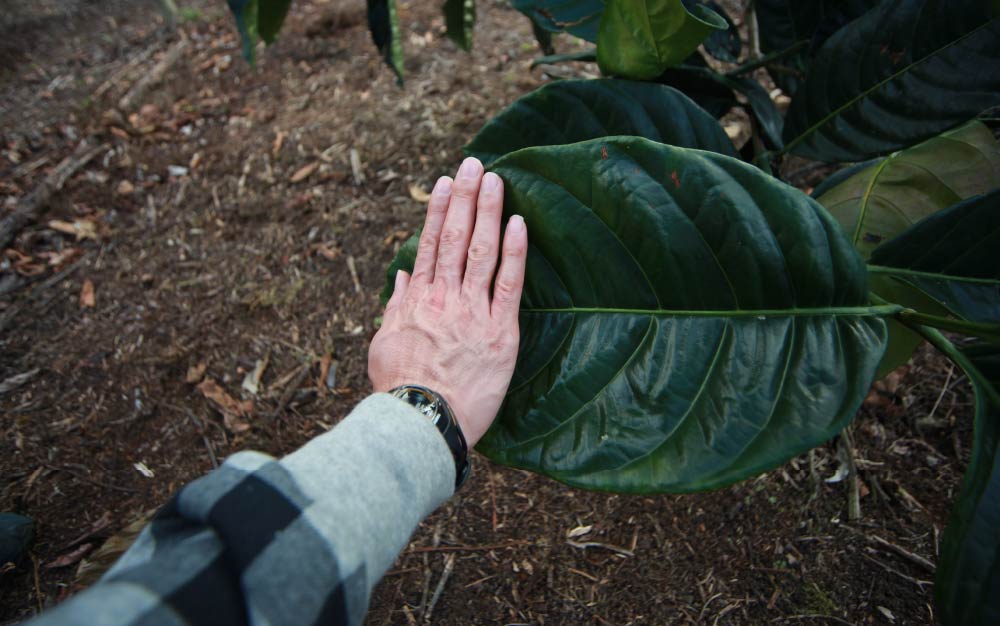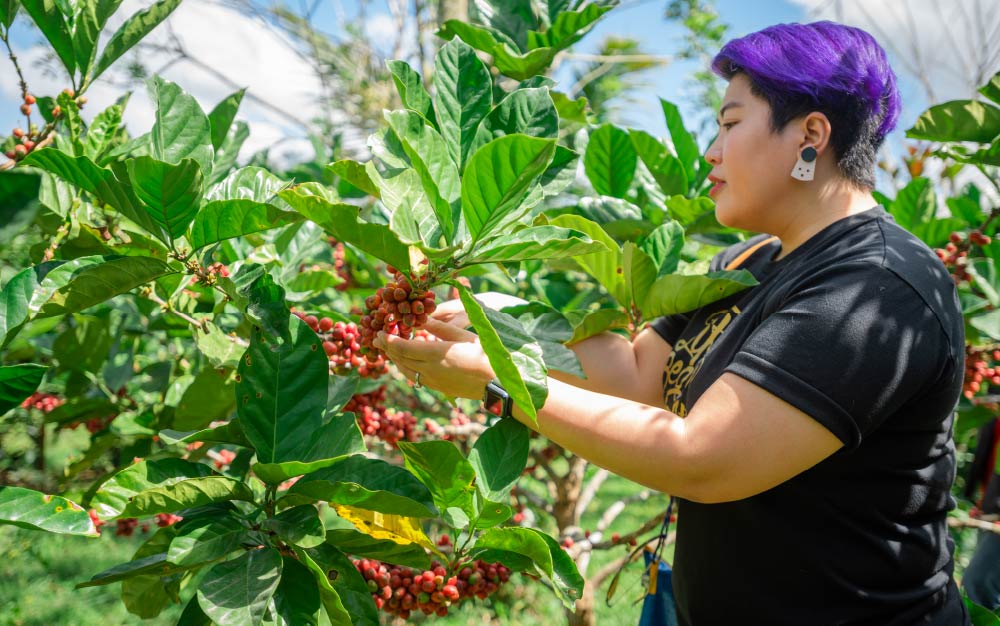There are more than 120 coffee species identified in the genus Coffea. Producers, traders, roasters, baristas and consumers will be primarily familiar with two of these: Arabica and Robusta. However, there is a third species after these two that is mainly grown in Southeast Asia: Coffea Liberica. Today, it is the main species of the Coffea genus grown in Malaysia and the Philippines. So where does Liberica come from? How does it taste? And could it become more popular in the future?
Liberica coffee is also known as Excelsa (or Coffea excelsa), in Vietnam it is called Jackfruit coffee and is known as Kape Barako (or Baraco) in the Philippines - where it is commonly grown.

Coffea Liberica originates in Liberia, West Africa. However, today, it is mainly grown and consumed in Southeast Asia – specifically the Philippines, Indonesia and Malaysia. In the Philippines alone, Liberica accounts for more than 70% of all coffee grown. “It may have started in Liberia, Liberica coffee reached Ethiopia, and from there it may have reached the Middle East and thus spread to Southeast Asia. (At that time, Muslims often came to Malaysia for religious reasons, according to Pacita Juan, member of the Steering Committee on Forestry and Farm Facilities of the Food and Agriculture Organization of the United Nations.
It is also possible that colonists brought Liberica coffee plants with them to Southeast Asia when they settled. Because most of Southeast Asia was occupied by the French, Dutch or Spanish. These European colonists would bring coffee with them, which then influenced the coffee drinking habits of most Southeast Asian countries, – Pacita added.
Rapid increase
Although the details of how Liberica reached Southeast Asia are disputed, studies indicate that it experienced a large increase in popularity in the late 19th century. This opportunity came from ca. in 1890, when an epidemic of coffee leaf rust wiped out more than 90% of all Arabica crops worldwide. Therefore, disease and pest resistance becomes a top priority when choosing coffee varieties.
While many producers switched to Robusta at this time, producers in the Philippines were instead encouraged to grow Liberica. This is because the Liberica plant is much more resistant to coffee leaf rust, and it can also be grown more easily than the Arabica plant over a wider temperature range. Furthermore, it is also more difficult for pests to penetrate the peels of Liberica fruits, because they are significantly firmer. The proximity and ease of travel from the Philippines to other Southeast Asian countries has contributed to the rapid spread of this species.
Liberica coffee seedlings are transported to a farm in Kampung Karu, Padawan, Malaysia|
The Philippines is just a boat ride away from Malaysia and Indonesia. “Coffee and spices can move from one country to another without the need for large ships.” – Pacita Juan, UN.
Biological characteristics of Liberica
Gonzalo Hernandez is the owner and owner of Coffea diva, a “coffee garden” in southern Costa Rica that grows more than 700 different types of coffee. He explains that, “Liberica can be found growing wild throughout tropical Africa. It is a very sturdy coffee plant. Under the conditions of Coffea diva, it grows very well, and there are even a few natural mutations here.”
The Liberica tree begins to bear fruit 5 years after it is planted. They grow very tall, with some trees reaching heights of up to 17 meters – which can make picking the fruit difficult. The leaves and fruits of the Liberica coffee tree are also significantly larger than the leaves of the Arabica and Robusta trees. Liberica leaves can grow up to 30 cm wide and the ripe coffee cherries of this species can be almost twice the size of the other two varieties.

Liberica coffee leaves
What's special is that the pulp/kernel ratio for Liberica is about 60:40, compared to the 40:60 ratio of both Arabica and Robusta, which not only increases the drying time for Liberica fruit but also affects the flavor. . “Because Liberica has a lot of fruit pulp and ferments when naturally dried, it has many fruit flavors, including a taste similar to jackfruit – a fruit very popular in Southeast Asia,” Pacita explains. The wild Liberica coffee tree in the Liberica region also has the characteristic flavors of jackfruit - rather than citrus fruits such as oranges or tangerines.
Naturally processed liberica tends to produce subtle jackfruit flavor notes, while wet processing results in more citrus and floral flavors, or even more “traditional” flavors like chocolate .
Not only does the Liberica coffee tree have leaves as big as jackfruit leaves, it actually smells like jackfruit!
Additionally, Liberica's other notable flavor characteristics include a long finish and consistent sweetness – Liberica is often described as sweeter than Arabica. This may be because Liberica beans are more porous, meaning the kernels can absorb more sugar from the mucilage layer.
Liberica coffee tree today
About 20 years ago, Liberica rarely appeared on the major coffee market globally, and is primarily used in the production of commodity-grade instant coffee. Farmers often mix Liberica with Robusta because there are no buyers. Typically, they will sell this blend to instant coffee manufacturers like Nestle or people who normally buy Robusta. However, many efforts in the early 21st century helped popularize the species in the Philippines.
Liberica had its own book about it in 2005, called Barako: The Big Bean; It explains that Liberica has a higher value than the commodity Robusta, aiming to drive interest in cultivating the species.

Liberica is also the main coffee species grown in the Philippines and Malaysia
Today, Liberica has a strong position in the Southeast Asian market – possibly due in part to demand created by religion. Malaysia and Indonesia are largely Muslim countries, and therefore after prayers, drinking coffee is often part of the people's routine. Furthermore, the Middle East also has a demand for Liberica – It has a fruity flavor, and is brewed lightly, almost like tea… it is often drunk with dates, as an afternoon tea.
Liberica's future
Worldwide, the perception of Liberica is starting to change and improve. There have been symposia focusing on Liberica specialty coffees, and there was even a Liberica coffee roasting competition. It should be noted that, just like Arabica, producing specialty or high-quality Liberica is “The only way to overcome the negative connotations associated with quality is to give specialty coffee lovers the opportunity Enjoy the specialty of Liberica" according to Pacita.
For this to happen, progressive roasters need to incorporate Liberica coffee into their specialty coffee production processes. This may be of particular interest to some third-wave coffee shops and roasters, especially those with an interest in rarer, more unorthodox coffee varieties.

Liberica coffee tree in the Philippines
For farmers, Liberica can bring many benefits. Besides being resistant to pests, it also grows well among other crops, allowing farmers to diversify crops for added stability; You can even plant Liberica trees among other fruit trees such as bananas, papayas and pineapples, peanuts, etc. These are economic solutions for farmers, instead of just being able to harvest coffee one at a time. times a year, Liberica gives them the opportunity to plant crops in between harvest seasons.
Can Liberica become an alternative?
Climate change is narrowing the majority of land areas suitable for growing Arabica coffee - which has strict temperature requirements. For farmers on the Arabica farming belt, investing in a more robust crop is the only option. Liberica has proven to be more resilient than Robusta in some areas – its root system grows deeper and can adapt to a variety of soils. However, the Liberica tree does not yield as much as the Robusta tree, making it a trade-off.
Ultimately, if we want to move the coffee industry forward together, diversity among the species we grow is vital. It's a step toward broader sustainability for coffee producers and the supply chain as a whole.
S795 is a hybrid between Kent (a natural mutation of Typica originating in India) and the Liberica species, most commonly grown in Indonesia.
Liberica's unique flavor profile, high resilience, and foundation have made it an attractive new option for manufacturers and consumers alike. In an age of many problems and concerns, it could be a rare opportunity. Whether it can be considered a solution, however, remains to be seen.
According to PrimeCoffee






